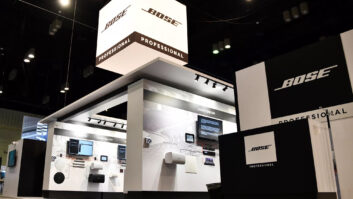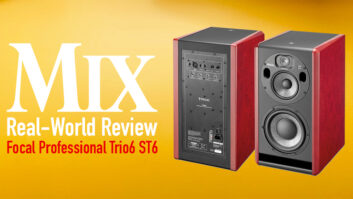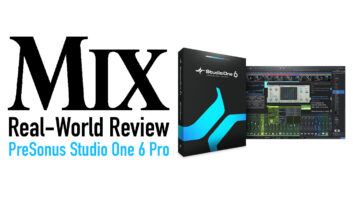
Marantz Professional continues its tradition of creating rugged andportable recorders with the CDR300 ($849), a tough, little CD-R andCD-RW burner. Anyone who is familiar with the Marantz/Superscope PMDSeries cassette recorders, which included a built-in condensermicrophone and a small speaker, will feel right at home. However,unlike its tape-based siblings, the CDR300 offers professional featuresthat make it worthy of further scrutiny.
The CDR300 is a tabletop unit with a hard plastic shell that weighsjust seven pounds. The review unit fits easily into my laptop computercase, which was a blessing for road trips and air travel.
The CDR300 has a pair of XLR mic inputs, a pair of ¼-inch TRSmic/line inputs and discrete input level controls for each channel. Adedicated 48-volt phantom power button sends power to both XLR jacks.The quality of the mic preamps is similar to what you would get from amedium-price, small-format mixer. This meant that I could leave myexternal preamp at home if I wanted to travel light and return withquality recordings.
A number of handy features prove that Marantz did its homework: TheCDR300 has dedicated buttons and switches that cover most of the basicfunctions, making this an exceptionally easy recorder to use. Thestandard transport controls (Play/Pause, Stop, Record, Cue and Rewind)and the Erase and Finalize buttons reside on the top panel in plainview. A front-panel switch selects the input for both channels (mic,line or the internal stereo microphone), and you can choose whether theinput signals are sent to separate channels or to both simultaneously.Other useful items include two limiter settings, a 20dB attenuationswitch, and preset bandpass and highpass filters that can be added toeach input independently. The data selects the operating mode and trackIDs during playback. However, you’ll need the wireless remote toincrement track IDs while recording, so keep it handy.
The CDR300 has a pair of rear-panel aux inputs so you can record aline-level source while you’re tracking with the other analog inputs.The rear panel also includes S/PDIF coaxial digital I/O and inputs fora wired remote and a foot pedal.
The CDR300 offers two stereo pairs of analog outputs on unbalancedRCA jacks running at -10 dBu. The mix outputs carry the audio comingfrom the mic/line and aux inputs prior to reaching the CD-R drive ortone controls. These outputs can be used for monitoring or recording,because the signal is present even if the CD-R drive is not in Recordmode. Alternately, you can modify the signal going to the line outputsusing the top-panel tone controls and front-panel level control. TheCDR300 also offers four headphone-monitoring options: mic/line input,aux input, line output and mix output.
Although I was skeptical about needing the built-in speaker, I foundit handy more than once to audition takes in the field when I didn’thave enough headphones to go around. The three tone controls locatedbelow the speaker — Treble, Mid and Bass — can be usedduring speaker playback.
The CDR300’s Minute Track record option automatically writes a newID every minute. I found this mode indispensable when recording longenvironmental takes. If I need to hear what happened 32 minutes intothe session, then I can choose track 32 during playback.
In Sync Record mode, the CDR300 begins recording when it detects asignal from an external analog or digital source. Sync Rec+Final modeworks the same way but automatically finalizes the disc at the end ofthe session. The CDR300 has the option of adding text to your CD-R orCD-RW, such as song titles and other session details, before youfinalize the disc. Of course, the added text can only be read by CDplayers that support the CD text format.
The CDR300 is also the only stand-alone CD burner that I know ofthat can run off of a battery. The RPS300 Remote Power System ($199)includes a lead-acid battery and recharger. The battery weighs almostas much as the recorder, but it offers approximately four hours ofoperation. That allowed me enough time to set up a field session, do aquick sound-check and still have enough power to record a couple ofdiscs.
In addition, the RPS300 can be used like a UPS when you’re runningthe CDR300 on AC current. If the AC power is interrupted or lost duringa session, then the battery system will automatically take over so youdon’t lose any data. This gave me extra confidence while recording liveconcerts.
The CDR300 is a great value for your money, even factoring in thebattery system’s price. The recorder’s size makes it suitable forstudio and live work when portability and ease-of-use are important.Considering its sound and versatility, the CDR300 is hard to beat.
Marantz Professional, 630/741-0330, www.marantzpro.com.
Laura Pallanck is a recordist based in NorthernCalifornia.







